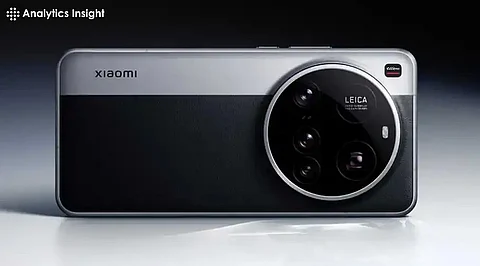

The Xiaomi 15 Ultra is set to make a significant impact in the smartphone market, thanks to its outstanding specifications and innovative features. Before its release, it's important to conduct a comparative analysis with other leading smartphones to understand its strengths and weaknesses.
Display: This phone has a very big AMOLED screen, which is 6.7 in size and has a resolution of 1440 x 3200 pixels. Refreshed at the rate of 120 Hz, the user would feel the viewing experience with all the lovely colors and continuous scrolls.
Camera: The Xiaomi 15 Ultra comes with a quad camera that consists of a 200 MP periscope, 50 MP main sensor, 50 MP telephoto lens, and a 50 MP ultra-wide lens. This configuration can allow outstanding photography in the sweetest style, especially because it has a Samsung ISOCELL HP9 sensor.
Performance: With a Qualcomm Snapdragon 8 Elite processor, this mobile is built to help the user in different ways, including gaming and multitasking, so they will have flawless performance. 16GB RAM and 512GB storage unit will suit many heavy users.
Battery: With a 6000mAh battery (admittedly, some reports cite 5500 or even 6100mAh), 90W fast charging, and wireless charging capabilities, one can blissfully operate without having to recharge a boring number of times.
Display: Whereas the Galaxy S23 Ultra has a larger 6.8 dynamic AMOLED, with a maximum refresh rate of up to 120 Hz, both phones boast excellent imaging. However, in terms of size and personalisation, the Samsung model has an edge.
Camera: The flagship from Samsung offers a 200 MP primary sensor and the regular 12 MP front camera and has all the versatility of a Samsung camera with 8K video recording. The quad-camera setup on the Xiaomi 15 Ultra competes closely but lacks the refinement in camera software and features that a Samsung setup might have.
Performance: Both models boast of the very best processors in their respective territories. Samsung offers at least Exynos 2100 in some parts of the world or Qualcomm Snapdragon 8 Gen 2 for Galaxy as the default powerhouse. However, for the Xiaomi 15 Ultra, the Snapdragon 8 Elite could offer better thermal management.
Battery: It is said that the Galaxy S23 Ultra comes with a somewhat lesser 5000 mAh battery, yet it includes fast charging. The greater battery capacity of Xiaomi gives it an advantage in terms of longer life.
Display: The iPhone 15 Pro has a 6.1-inch Super Retina XDR display with a 120 Hz refresh rate. Although smaller than the Xiaomi 15 Ultra's bigger size, its brightness and colors are top-notch in comparison.
Camera: The quad-camera setup contains a 48 MP main sensor and a 12 MP front camera with functionalities such as Night mode and Cinematic mode. The higher megapixel count on the Xiaomi 15 Ultra may not bring about better pictures, as software optimization is mostly well known for Apple.
Performance: Hence, the iPhone 15 Pro is expected to be more than twice as fast as the Apple A17 Bionic Chip while providing higher security without complex customary options, owing to a closed ecosystem.
Battery: The iPhone 15 Pro-battery is small. It has a smaller battery, and the phone promises to provide sufficient power savings to last the entire day. Xiaomi's bigger battery is a huge point of difference for those heavy users.
Display: The Pixel 8 Pro has a 6.7-inch OLED and a 120-Hz refresh rate. Thus, just like the Xiaomi 15 Ultra, this device offers Google's software optimization experience.
Camera: Google's camera software is well acclaimed, with Night Sight, Portrait mode, and many others. The camera hardware of the Pixel 8 Pro may not be as high in megapixels as the 15 Ultra, but results in real life speak otherwise.
Performance: Well-matched to Google's ecosystem, the Pixel 8 Pro runs on the Google Tensor G3 chip, making it a versatile and trustworthy mobile performer. Although it is not the same as the Snapdragon 8 Elite in terms of performance, it integrates well with Google Services.
Battery: The Pixel 8 Pro relies on a smaller battery that optimizes its power usage. Still, a significant advantage is the fact that Xiaomi has a larger battery capacity.
The Xiaomi 15 Ultra competes firmly in the premium smartphone market, boasting impressive camera capabilities, strong performance, and a substantial battery life. It faces tough competition from major brands like Samsung, Apple, and Google. However, it offers attractive pricing and solid specifications, appealing to cost-conscious buyers who are willing to invest in a high-performance Android device. Ultimately, the choice among these smartphones will depend on individual preferences regarding ecosystem, camera features, and user interface. Those seeking a powerful phone with advanced camera capabilities within the high-performance Android ecosystem will likely appreciate the Xiaomi 15 Ultra.
